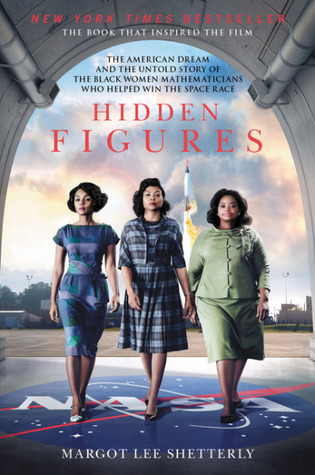 Last September, I was at the National Book Festival hoping to get a signed copy of Outlander for my boyfriend's mother (because Diana Gabaldon is her favorite and I'm thoughtful like that). A few queues over from the Gabaldon line was one for Margot Lee Shetterly. There was practically no one in it. How odd, I thought. Hidden Figures was a pretty big movie, after all, getting a lot of press, acclaim, the whole shebang. I found it very odd that there wouldn't be more people in that line. Well, now I know why the line was so short: this book is boring.
Last September, I was at the National Book Festival hoping to get a signed copy of Outlander for my boyfriend's mother (because Diana Gabaldon is her favorite and I'm thoughtful like that). A few queues over from the Gabaldon line was one for Margot Lee Shetterly. There was practically no one in it. How odd, I thought. Hidden Figures was a pretty big movie, after all, getting a lot of press, acclaim, the whole shebang. I found it very odd that there wouldn't be more people in that line. Well, now I know why the line was so short: this book is boring.And let me say this. A book about a story that is this fascinating should not be this boring. And yet boring it is.
This is, undeniably, an important story. In a time when segregation was still the norm, female working women were still referred to as "girls," and women were pretty much banned from STEM fields, women were essentially storming NASA's predecessor, NACA, working as human computers and clawing their way upwards to the ranks of mathematicians and engineers, marking various "Firsts" and shattering glass ceilings as they went. While white women were involved, Shetterly focuses on a much-ignored group, the West Computers and the women who came out of that pool to work in other areas, who were black. While she talks about a few people here, only two names ultimately stuck in my head: Dorothy Vaughn and Katherine Gobels/Katherine Johnson. Vaughn eventually ran the West Computers, and Johnson ran the calculations for the first American orbital flight and the reunion of the Apollo 11 moon landing crew and flight crew after departing from the moon. There was a third main person, but Shetterly does such a poor job of actually distinguishing between these women that I honestly couldn't tell you anything about her. And actually, there was a fourth woman, too--but she was in college for the events of the book, and I'm not entirely sure why she was included at all.
But my biggest dig against this book is that it's not predominantly about these women. They are simply a lens through which Shetterly examines the Civil Rights movement, the press for desegregation, and all kinds of other social movements that surrounded these issues in the forties, fifties, and sixties. While all of this is vitally important, it's not what I picked up the book to read about. Additionally, the writing is extremely purple at times, not at all suitable for a nonfiction book. It's entirely possible to do a book of literary nonfiction and do it well, but Shetterly does not. It's always dangerous to project details of emotions, actions, etc. onto conversations and situations at which you were not present, and are collecting details from second- and sometimes third-hand, and yet that is exactly what Shetterly does. Between wariness at this practice and sometimes eye-drooping boredom when Shetterly spent ages away from the main narrative to instead talk about the March on Washington, or something else entirely, I found that I didn't enjoy this book much at all.
Overall? Important, fascinating story, but obscured by poor telling. The movie might be better on this one.
2 stars out of 5.
No comments:
Post a Comment